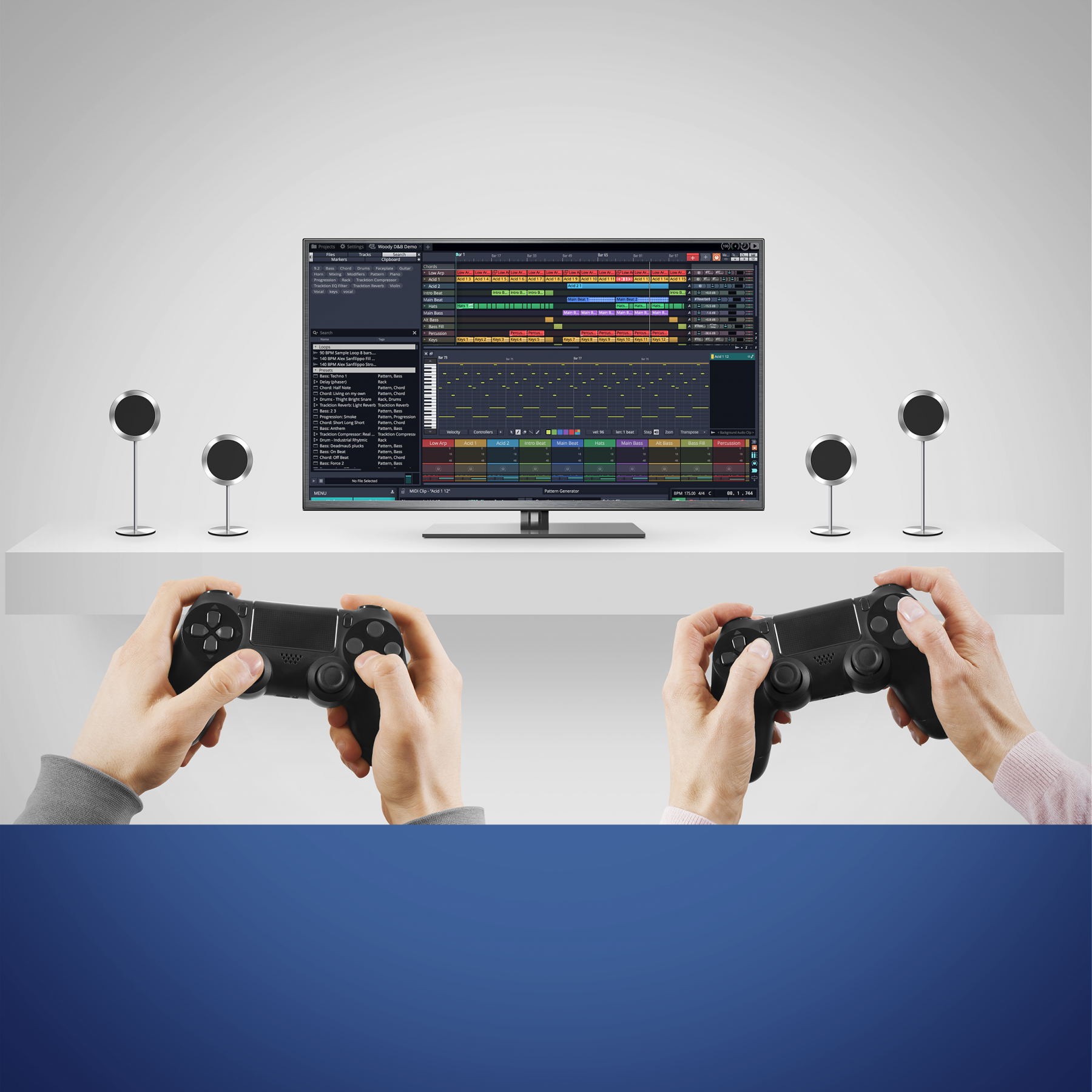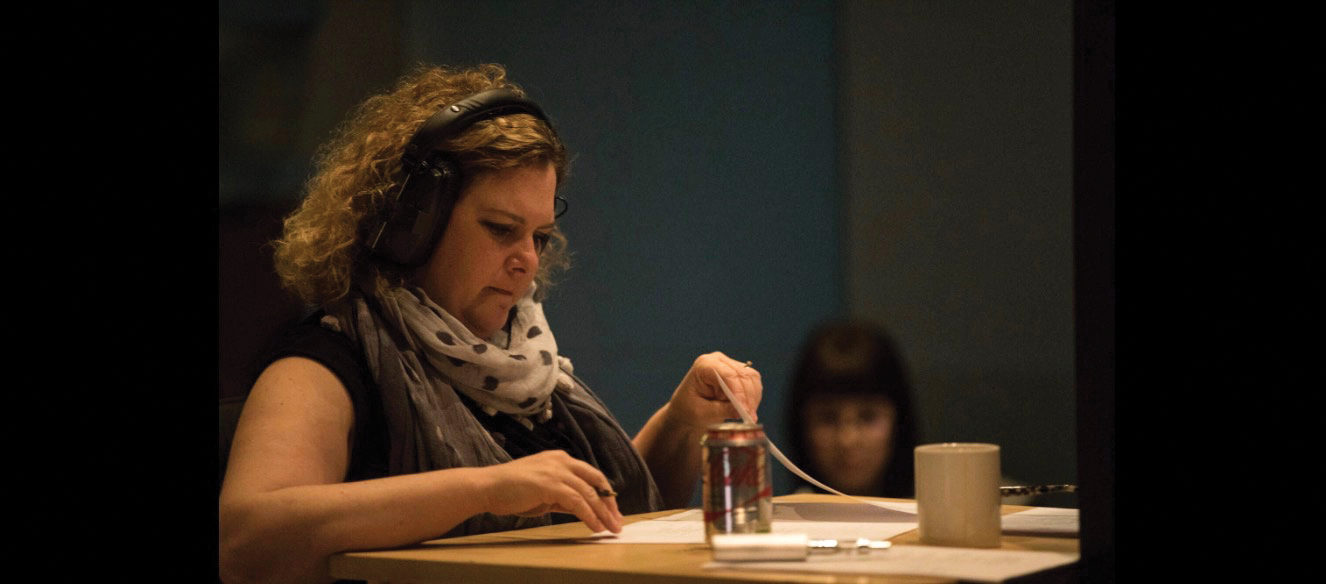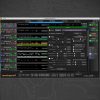
Playing Your Role
BAFTA-winner, Adele Cutting, draws on 20 years of experience to tell us what it takes to navigate the ‘non-linear’ world of videogame sound design.
Adele Cutting is a BAFTA award-winning creator and producer of sound and dialogue for video games whose extensive and illustrious track record includes Dungeon Keeper 2, Theme Park World, F1, the Harry Potter franchise, The Room franchise, and Shadow of the Beast, not to mention her work in film and animation.
Before founding her own sound services company Soundcuts in 2011 she was an audio head honcho for Electronic Arts. She arrived there in ’97 just as the massive worldwide video game developer and publisher was starting to take its game audio very seriously. Well ahead of the curve, EA was investing in pro-audio talent and world-class studio facilities while other game developers were still sticking egg cartons on walls.
Adele was snapped up for a rare junior position in the EA UK sound department just as she emerged from the more ‘linear’ audio training at the UK’s renowned National Film & Television School and a brief stint in film post-production. The ensuing years saw her rise through the ranks to ‘sound designer’ then ‘senior sound designer’, to ‘audio director’ then ‘senior audio director’.
By 2006, she was heading up music, sound and dialogue provision for a series of Harry Potter titles; managing a large team and cast to bring the sound of the beloved franchise to millions of games consoles across the globe. A massive deal.
When it comes to the role of sound designer — and all things game audio — Adele Cutting has been around the block a dozen times. We sat down with her to find out what it takes to make it as a sound designer.

John Broomhall: How was the move from linear storytelling to interactive gameplay?
Adele Cutting: It was the time of Playstation 1, so things were very different. There was no middleware like Fmod or Wwise for audio implementation. I was reliant on old-school programmers. In terms of the tools used for sound creation it was exactly the same: Pro Tools, software plug-ins, regular recording gear and a massive sound library, but there were also esoteric data-compressed formats like VAGs which had to loop on a certain multiple byte boundary and super-tight memory restrictions — a lot to get my head around.
Thankfully, things really changed. For games sound designers today, tools like Fabric, Fmod and Wwise make it a lot easier to plug your sounds into the game. That said, aspiring sound designers should still master the basic game audio skills: sample looping, dialogue fade in/out and de-clicking, and not just rely on RX4! I had to learn how to break down something composite I’d track-laid in Pro Tools — say a 10-second complex explosion — and deliver it as a set of tiny component parts: one-shots and loops, with scripted replay and pitch-shifting, and re-triggering with little time lags, plus maybe a low-pass filter. It was all to be played live in kit form at run-time to re-create an interactive and much less memory-hogging version of what I had created in Pro Tools. That knowledge and approach is still very relevant; from creating sound design using components on-the-fly within a game engine for maximum flexibility and variation through to tackling the technical restrictions of a mobile phone game (memory, voice count, CPU power, etc).
John Broomhall: What pro audio gear does a game sound designer need to be all over?
Adele Cutting: Well, Reaper is currently the tool of choice for many developers. It’s relatively ‘game-facing’ in terms of scripting. For example, we’ve been able to do incredibly quick automated exports from huge sessions of foley recordings. But as a freelancer, I’ve been asked to use pretty much everything including Pro Tools, Nuendo, Cubase and Vegas.
An absolutely key piece of kit for me is a sound recorder. We use various devices depending on the context and I always carry a little Zoom H4N. It’s far better to record something that sounds right at source than try and manipulate and shoehorn something from a sound library. I’m listening to the world all the time. I’ll be out with my kids completely away from work, hear something and think, ‘Ooh, if I pitch that down, that would really work for the creature I’m working on.’ You’re listening to the world in a particular way, which can be quite annoying for other people! It’s a fun part of the job; squidging wet pasta for gloops or tapping your tummy for funny little animal sounds. I have a ‘thing’ with door sounds and window rattles — I’ve recorded lots of my neighbours’ sheds! You can get an oddball reputation when you’re into sound.
John Broomhall: So you need good ears and some natural proclivity for analysing sounds?
Adele Cutting: Yeah, you can teach people to implement game sound — it’s logical — but you can’t teach someone how to hear it. Some people can’t recognise what to me would be an obviously bad resonance. Or they might not be able to pinpoint and articulate it. One very early test I was given after just starting at EA was creating the sound of a spaceship landing and taking off, strictly using sounds I’d recorded. I thought it was a terrifying challenge but went home and recorded hairspray aerosols, mouse cans, hairdryers, blenders, and metal kitchen stuff scraping and dropping onto stone. I manipulated the raw material and got the job done. It was scary but a useful test of hearing, imagination and resourcefulness which I’d recommend for anyone starting out.
John Broomhall: What about artistic uses of sound for story-telling, where you’re creating or conveying emotion which isn’t a literal reflection of what you’re seeing onscreen?
Adele Cutting: I love doing this by manipulating sounds in the ambience track, or using ambient spots to tell more of the story not shown onscreen.
One example could be a night time scene which gets progressively more tense, so you change the type and intensity of the background sound to match. Like making the sound of crickets more frenetic or completely dropping them altogether. One minute the world seems fine, then it starts to feel like something’s wrong; it’s the background sound prompting that primal response. Then, hey presto, someone else slaps a big music cue over it… great!
Small changes to the mix or sound of the character foley is another useful trick. If the player is exhausted he should start to ‘feel’ heavier. Sound has such great potential to change the dynamics, but you have to leave enough space for it. Many non-sound people believe the only way to manipulate people’s emotions is through music, which isn’t true.
It’s tricky for a freelance service provider. You fight for your corner but it’s the client’s prerogative. You can push harder when you’re working with a team that totally trusts you and is passionate about quality and artistry in the game.
If you’re reporting to a producer/dev manager who doesn’t ‘get’ audio, and who’s of the mindset ‘see a sound, hear a sound,’ you need to prove why it’s worth doing.
When in-house, the development time is much longer and the audio director/narrative director will have a stronger voice leading to more ‘artistic’ and ‘narrative’ use of sound. The introduction of the term Narrative Designer has really helped this, as it binds together all disciplines towards one goal.
John Broomhall: What does an in-house sound designer do day-to-day?
Adele Cutting: You’ll have meetings/scrums/stand-ups/reviews to ensure everyone’s focused and knows what each other is doing across the development team and within audio.
On a larger title, you’ll be responsible for creating sound for one area. Doing everything required from recording source sounds, editing and manipulating them in software, implementing them in middleware tools, mixing them and testing them in-game. It could be taking ‘ownership’ of foley/movement, environment/world sounds, weapons, music editing/implementation or dialogue post-production.
On a small team, one person could be doing it all!
On larger teams there’s also the role of technical sound designer. Some people have a natural affinity for system design, integration and technical problem solving. They love creating complex patches with Max MSP scripting. They still have to be creative, but this ‘technical skill’ is a passion and strength. Conversely, a ‘creative sound designer’ needs to understand implementation. These roles aren’t mutually exclusive.
You’ll also be liaising with other disciplines — art, animation, design, programming. If you want to know what’s really going on, ask a sound designer! Audio is last in the development chain (although work will have started even in pre-production) — we have a lot of dependency on other disciplines, so we need to know where they’re at. Are they going to hit their deadlines or impact ours?
John Broomhall: As a senior audio director hiring sound designers, what are you looking for in a candidate?
Adele Cutting: With a large sound team in-house you can absorb different personalities but when it’s your company and your personal reputation on the line you have to be so careful. Aside from technical skills, good personal skills and professionalism are vital. Communication is key and it’s essential we’re working together and supporting each other as a team.
Naturally, you want people you enjoy being around, but professionalism is the key thing — a ‘no problem’ attitude.
More experienced designers need to work fast — there’s no fat when you’re freelance; you need to be organised and efficient; a positive problem-solver; fun to work with; a do-er with great ears, who doesn’t moan when clients change requirements or moan to other team members.
Obviously, it’s a given you must have sound design skills but it’s also these soft skills — honesty, a can-do attitude, super-hot organisation and heading off trouble at the pass, not being rude, communication — these make people successful and the kind you want to work with.



























RESPONSES